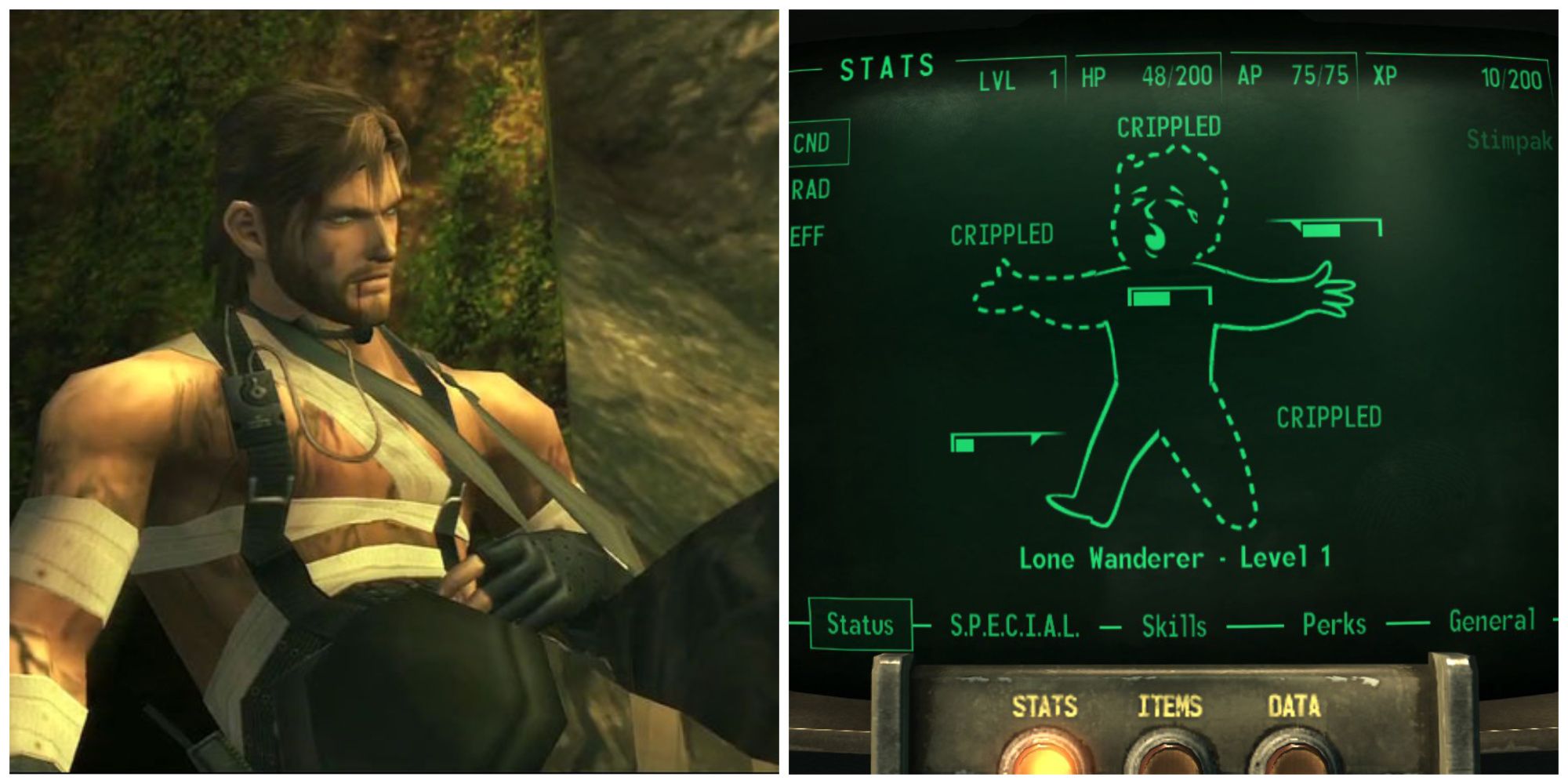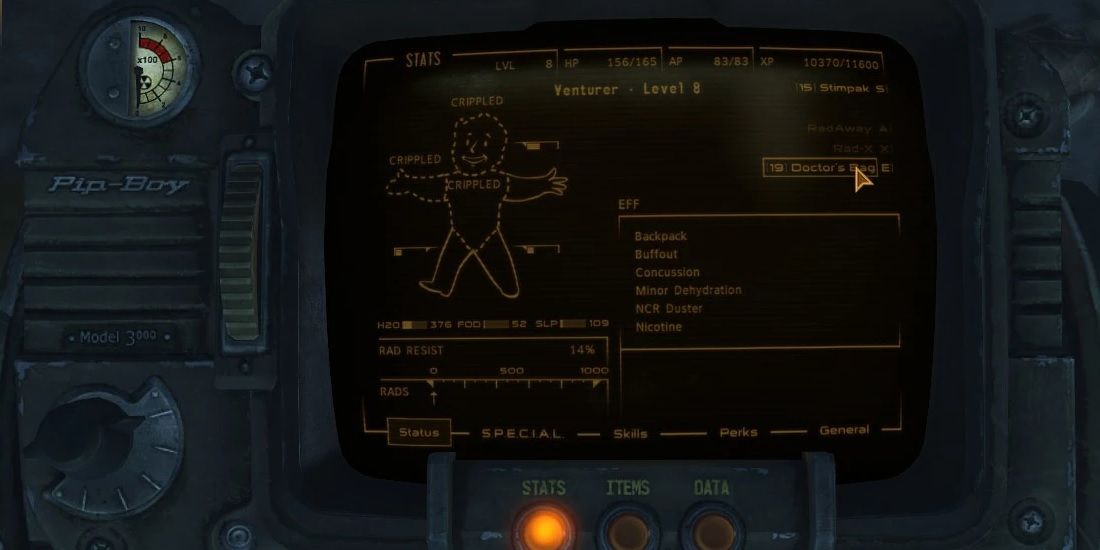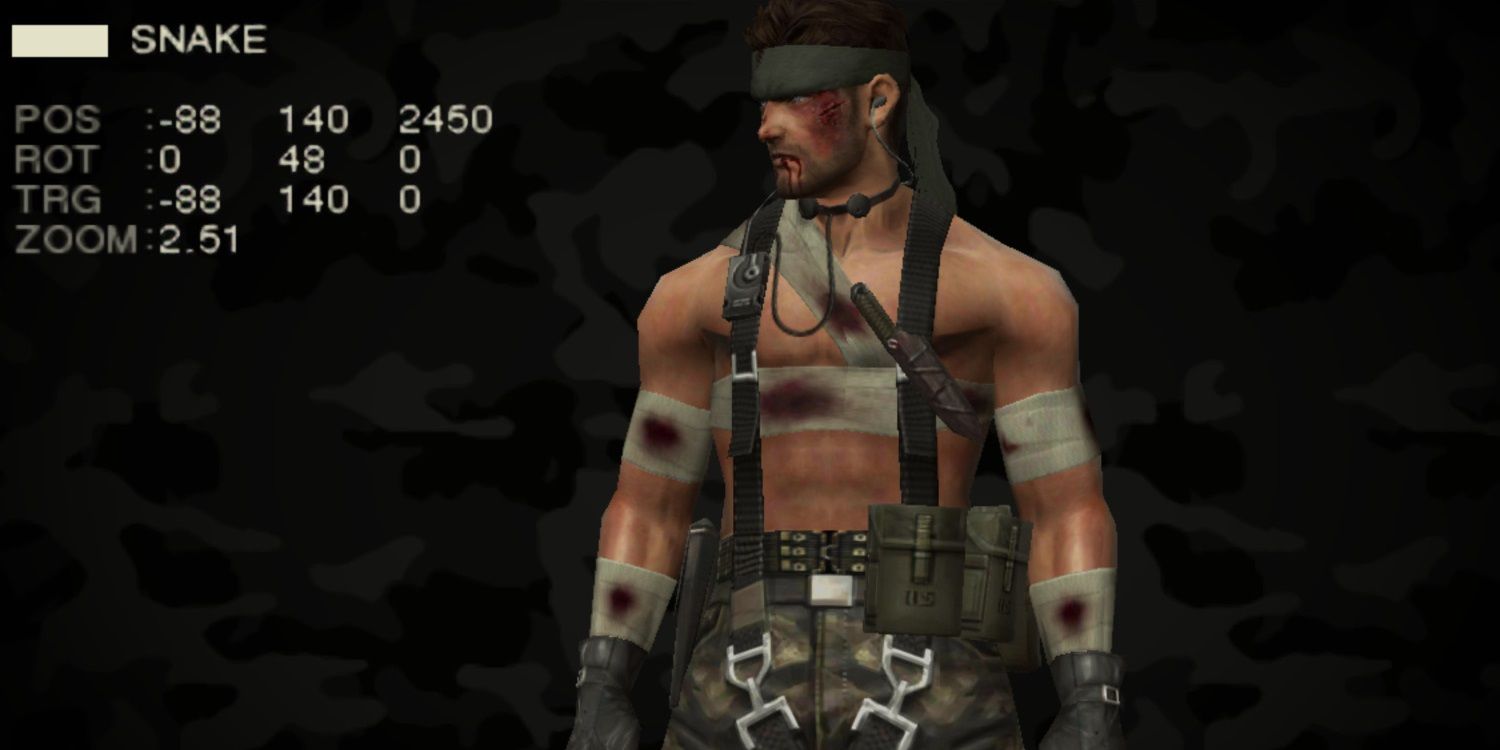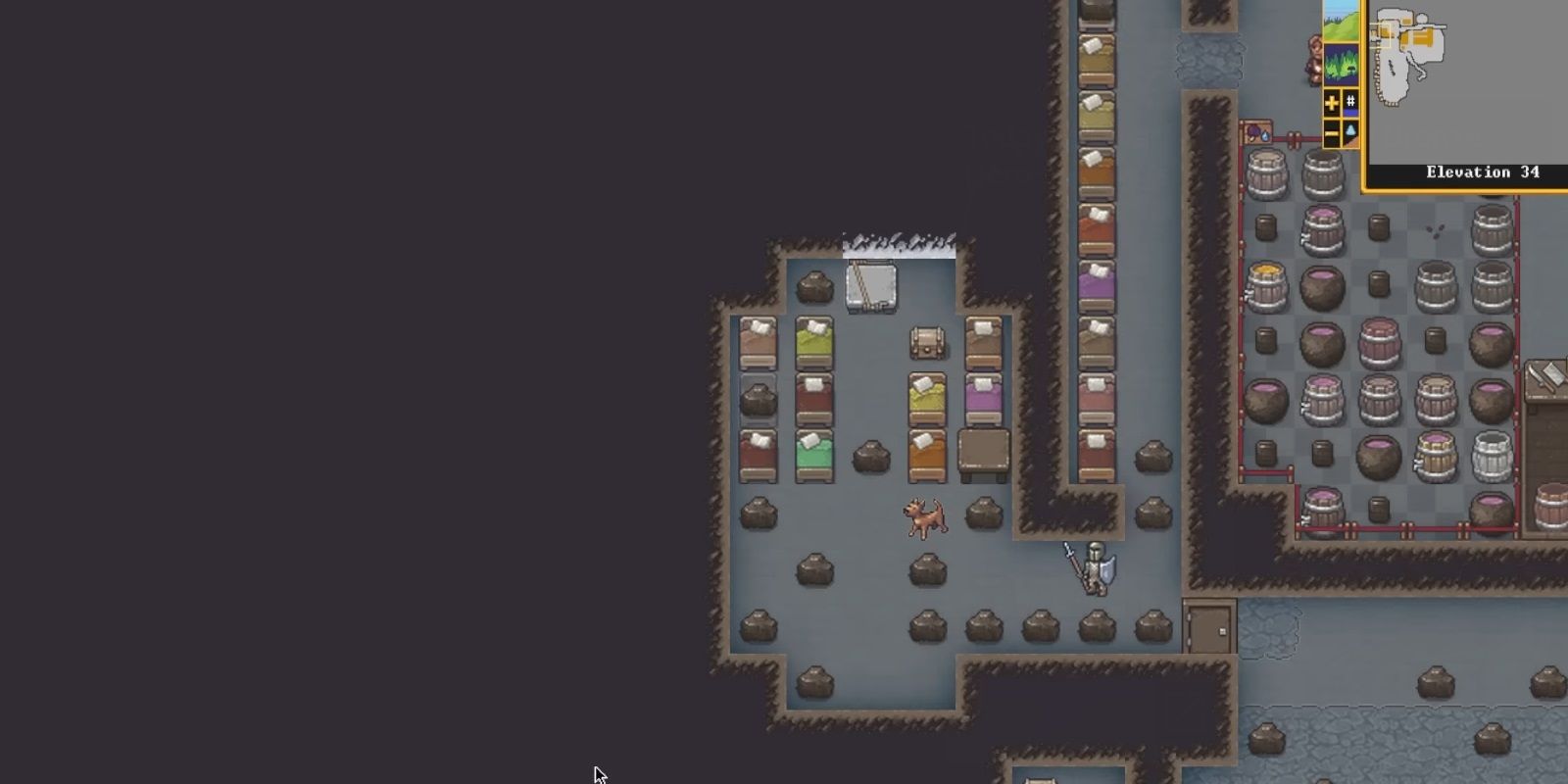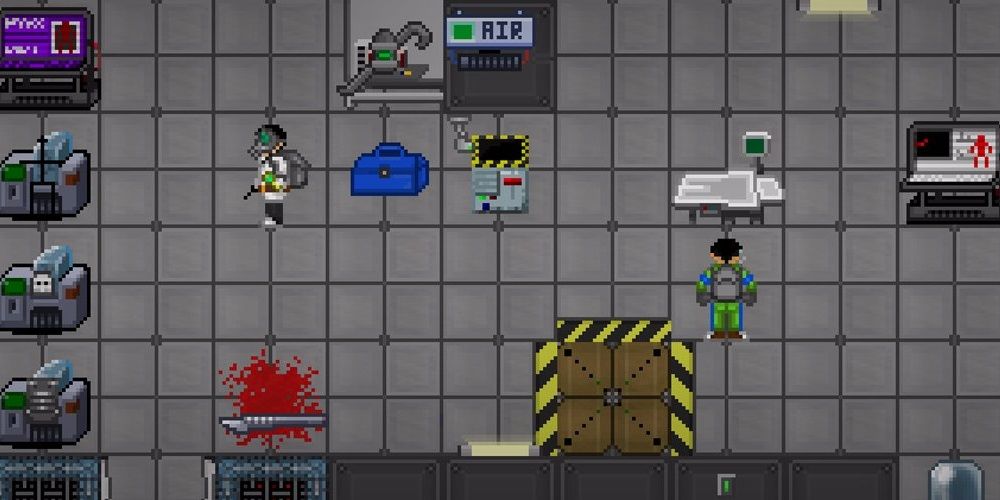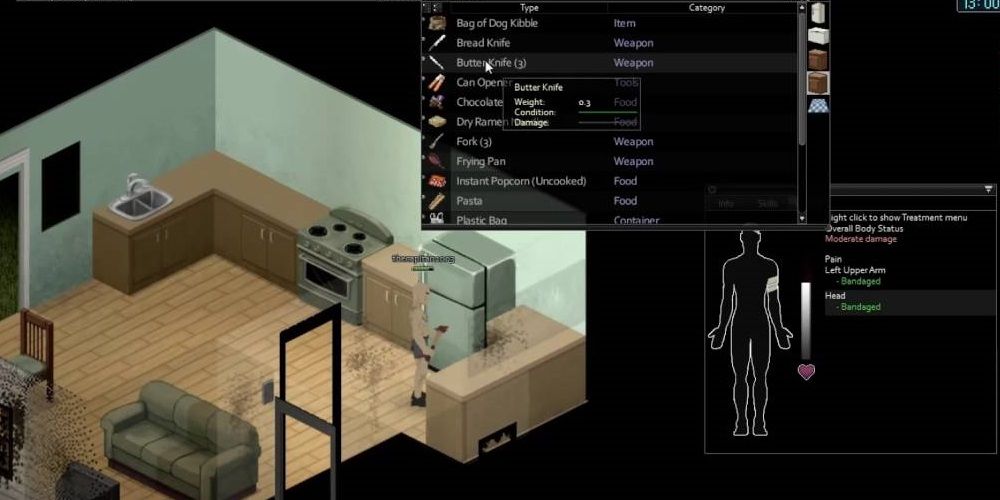Highlights
- Fallout: New Vegas and Metal Gear Solid 3 offer more realistic damage healing mechanics in video games.
- Dwarf Fortress and Space Station 13 also prioritize realistic injury and healing systems.
- Project Zomboid emphasizes long-lasting injuries that require careful consideration and planning to overcome.
For all the graphical fidelity and realism that modern developers strive for in other areas, damage and healing from damage are rarely depicted accurately in video games. If they were, any regular action encounter beyond a game's tutorial would be taken up by three weeks in A&E followed by a 12-24 month stint in physical therapy. Instead, most games have the wound-ridden protagonist wait behind a conveniently placed crate for less time than it takes to tie shoelaces for all their vitality to be fully restored.

Most Realistic Survival Games
These survival games will have players fully immersed thanks to their dedication to realism.
In other cases, med kits, food items, or health potions can be found stashed in nooks, crannies, and, occasionally, in the spines of the baddies for the player to pick up. However, when healing becomes a whole storyline in and of itself, and since the recovery of such a life-altering event can prevent compelling obstacles for human beings of any capacity to overcome, it is a wonder that more game studios do not look into this often-overlooked aspect of the deadly game of life. Thankfully, a handful of studios have looked into the art of realistic healing and found ways to close the gap between realism and fun.
5 Fallout: New Vegas (Hardcore Mode)
More Realistic Damage Healing Than Most For A Wacky Post-Apocalyptic Romp
- While it may be a wacky take, Fallout: NV takes into account limb damage and associated conditions
- In hardcore mode, healing means finding the right tool or a doctor to assess and fix the problem
Of all the places to find realism, it seems far-fetched to expect the wacky, apocalyptic parody of 1950s sci-fi shenanigans to get it right. While the process is basic, the Fallout series is an early (and famous) example of a video game trying to depict injury differently than a percentile number with a binary (dead or not dead) outcome, thanks to limbs having their own hit points and there being varying consequences for each of them being damaged.
In Fallout New Vegas, the "hardcore" mode treats crippled limbs with severity. Only the right tools (a doctor's bag) or personnel (an actual doctor) can mend a shot leg or a dizzying concussion. Without access to either, the player must suffer the long-term effects of the conditions. Sadly, a fade to black puts just about any condition right. Stim packs break the realism somewhat, but they do take some time to take effect upon use.
4 Metal Gear Solid 3
Semi-Accurate, Tactical Paramedicine Action!
- Injuries apply to different body parts and require procedural treatment
- Once Snake treats and wraps his ailments, he must wait for his wounds to close and stay well-fed
Healing in Metal Gear Solid 3: Snake Eater might be performed through a series of cleverly designed menus that helpfully pause the action around Snake, but mechanically, visually, and narratively, the healing done in this space captures the essence of absurd realism found nowhere else but in a Kojima title. Snake carries with him an arsenal of supplies, tools, and drugs that he can use to fix himself up on the battlefield with remedies that depend on the location and type of injury. Each treatment in the "survival viewer" makes a rational amount of sense (surprising, considering there's a character that shoots "bullet bees" out of his mouth).
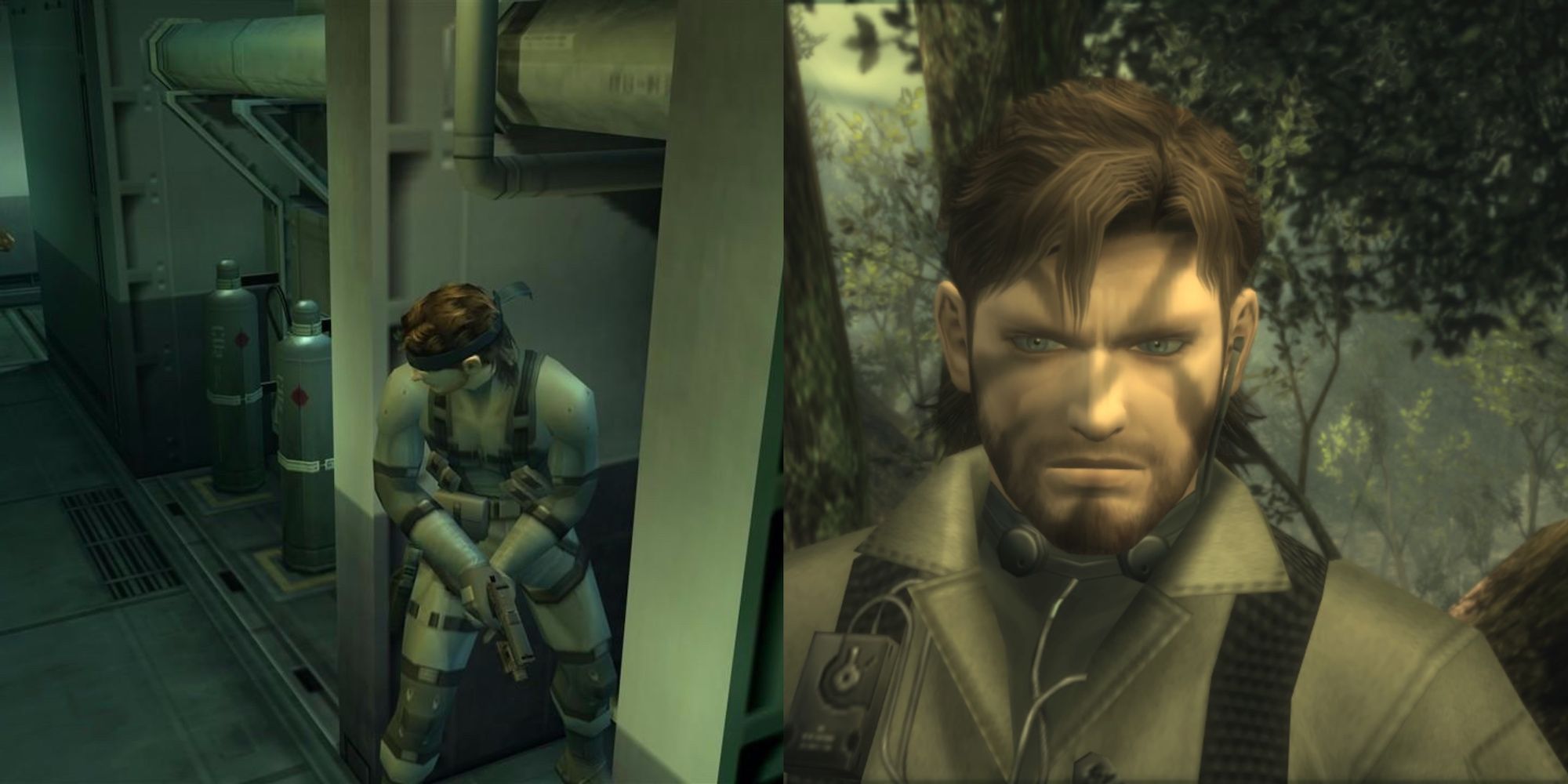
Metal Gear Solid 2 Vs. Metal Gear Solid 3: Which Game Is Better?
Metal Gear Solid 2 and Metal Gear Solid 3 are extremely different, yet similar. So, which of them is better?
For example, players must apply disinfectant, thread stitches, and bandages to cuts, or Snake will be prevented from returning to full health. In addition, once an injury is healed, they have to wait enough time for Snake's health (bar) to mend. Players are treated to the occasional mini-cutscene in which Snake performs those grizzly surgeries on himself, such as curing a burn wound or resetting a broken arm.
3 Dwarf Fortress
A Medical Simulation That Runs As Deep As A Motivated Dwarf Can Dig
Dwarf Fortress
- Platform(s)
- Linux , macOS , Microsoft Windows
- Released
- August 8, 2006
- Developer
- Bay 12 Games, Tarn Adams, Zach Adams
- Genre(s)
- Roguelike , Strategy , Simulation
- The simulation of the dwarven (and all types of creatures) is almost exhaustive, as is the treatment system
- Dwarves can end up with lasting or permanent injuries, which they must learn to live with
It's fair to say that besides the waiting time needed to portray injuries realistically, games have struggled to demonstrate realistic injuries because of the sheer number of ways the body can be broken, bashed, or breached. In Dwarf Fortress, features were emphasized well above graphics, which meant that its creator, Bay 12, could go deep into the simulation of the medical experience.
Provided that a given fortress has a doctor at hand (and one with the right knowledge to treat a specific impairment), players can expect their dwarves to go through the process of healing from just about every bodily trauma imaginable. Cuts, broken bones, infections, and more are expected to heal realistically. Dwarves with severed arms or legs have to learn to adjust to their new situations and will functionally act accordingly (using crutches or being unable to dual-wield, for example).
2 Space Station 13
An Absurdly Deep System Of Sci-Fi Therapeutics
- This richly deep sci-fi multiplayer immerses players in all manner of complex medical tasks
- The player must gain an understanding of a long list of drugs and medical instruments to help heal their crewmates
This entry is a science fiction title, which may be enough to disqualify it from a "realistic healing" discussion, but the sheer depth of the healing mechanics in Space Station 13 does convey the complexity of the medical profession. There is no single "medicine" skill but a plethora of separate disciplines to deal with worse ailments than even Star Trek writers could come up with, including genetic mutations, cosmic burns, deadly toxins, dismembered or dislocated limbs, alien parasites, and much, much more.

10 Best Healers From Games, Ranked
These characters went above and beyond in protecting their allies and keep them alive.
Being a medic in this forgotten multiplayer classic is truly a separate class on an almost asymmetrical level. Healers in this infamously complex game must be well-versed, confident, and casual in administering drugs with such intimidating names as "Yobihodazine," "Proconvertin," and "Super Hairgrownium" lest they accidentally maim or even kill their patients (or at best, give them an incredible handlebar 'stache), which would make anyone appreciate why it takes so long to become a doctor in the real world.
1 Project Zomboid
The Long-Term Game Of Survival And Mending
Project Zomboid
- Platform(s)
- PC
- Released
- November 8, 2013
- Developer(s)
- The Indie Stone
- Genre(s)
- Survival Horror
- As well as survive zombies, players must survive the elements and the environment
- Injuries are long-lasting and require careful consideration and medical planning to overcome
From back injuries to lodged bullets, Project Zomboid seems to have it all, which would make sense considering all the body horror possible in a game about trying to avoid getting bitten, scratched, or mauled by zombies in a global apocalypse. Zombies come with their own brand of slow-lurching terror, so it makes sense that there should be a healing system that takes its time, as well as a suite of bodily harm mechanics that play out over long periods unless treated.
As well as cuts, players have to worry about finding salves that are clean enough to prevent infection. Glass from jumping through a shattered window can get lodged in the body of the player character, and it's up to them to get it out with tweezers or continue to suffer. The severity mechanic makes it so that specific injuries take longer to heal than others and can depend on the metabolism of the player's character. Treating wounds is done through a menu, but the process of mending is treated with unparalleled realism.

